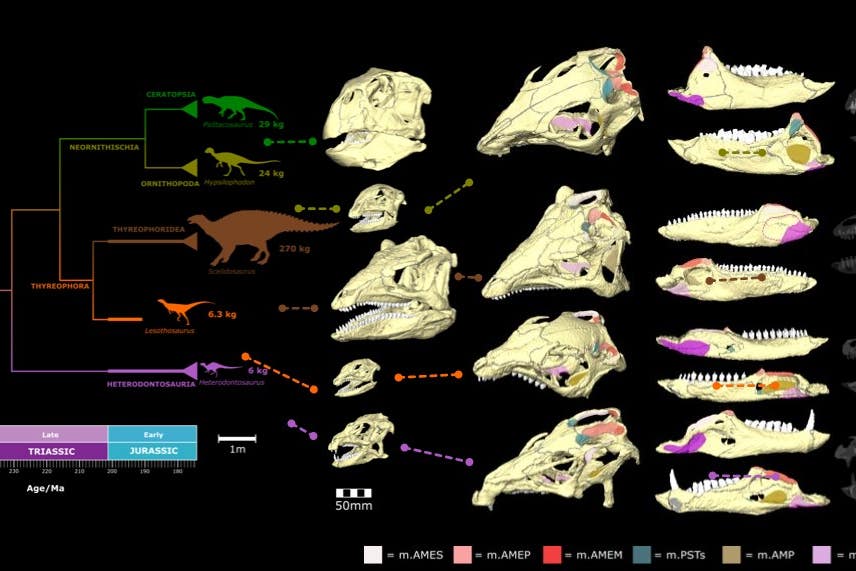Plant-eating dinosaurs had varied eating styles, skull analysis suggests
Scientists say this difference in feeding mechanisms ‘set them up to dominate life on land for millions of years to come’.

Your support helps us to tell the story
From reproductive rights to climate change to Big Tech, The Independent is on the ground when the story is developing. Whether it's investigating the financials of Elon Musk's pro-Trump PAC or producing our latest documentary, 'The A Word', which shines a light on the American women fighting for reproductive rights, we know how important it is to parse out the facts from the messaging.
At such a critical moment in US history, we need reporters on the ground. Your donation allows us to keep sending journalists to speak to both sides of the story.
The Independent is trusted by Americans across the entire political spectrum. And unlike many other quality news outlets, we choose not to lock Americans out of our reporting and analysis with paywalls. We believe quality journalism should be available to everyone, paid for by those who can afford it.
Your support makes all the difference.Plant-eating dinosaurs may have evolved to have different ways of eating their food despite having a similar diet, research suggests.
An analysis of skull specimens by UK scientists indicates that the first known herbivorous dinosaurs had a “surprising variation in eating styles” as a result of having different jaw muscles and biting actions.
The researchers said their findings, published in the journal Current Biology, could help shed further light on how dinosaurs evolved to occupy certain ecological niches, while at the same time highlighting “how innovative and unpredictable evolution can be”.
Senior author Professor Paul Barrett, a palaeontologist at the Natural History Museum, said: “If you want to understand how dinosaurs diversified into so many different types so effectively, it’s critical to learn how they evolved to feed on such a wide variety of vegetation in so many different ways.
“This diversity in feeding mechanisms set them up to dominate life on land for millions of years to come.”
These dinosaurs, although looking somewhat similar, had evolved very different ways to tackle a diet of plants
While all dinosaurs are thought to have descended from a single carnivorous ancestor, most of them evolved to become plant eaters.
For the study, the researchers analysed the skulls of Heterodontosaurus, Lesothosaurus, Scelidosaurus, Hypsilophodon and Psittacosaurus.
These dinosaurs belong to a group of herbivorous creatures known as Ornithischia, and, according to the experts, are the earliest representatives of what would become the major plant-eating dinosaur groups.
Based on available data, the researchers reconstructed the jaw muscles of the five dinosaur species.
They then simulated biting action to analyse the forces exerted by these muscles.
Findings suggest each dinosaur had a different way of eating plants.
For example, the team found that the Heterodontosaurus had large jaw muscles relative to its skull size, thus producing a high bite force ideal for consuming tough vegetation.
The Scelidosaurus, on the other hand, had relatively smaller jaw muscles compared with its skull but had a similar bite force – due to its greater overall body size.
Meanwhile, the Hypsilophodon skull shows that it did not have big muscles, but instead rearranged its muscles to bite more efficiently but with less muscle force.
Dr David Button, lead author of the study, who carried out the work at the museum but is now a researcher at the University of Bristol, said: “When we compared the functional performance of the skull and teeth of these plant-eating dinosaurs, we found significant differences in the relative sizes of the jaw muscles, bite forces and jaw strength between them.
“This showed that these dinosaurs, although looking somewhat similar, had evolved very different ways to tackle a diet of plants.”